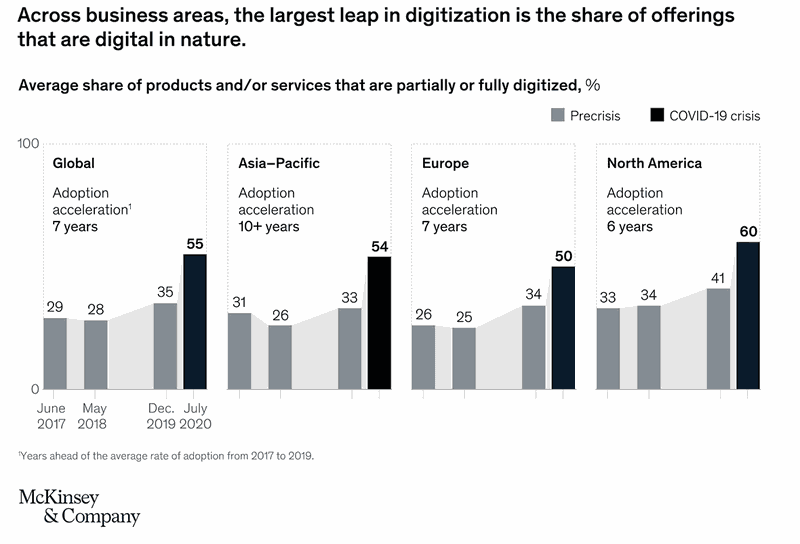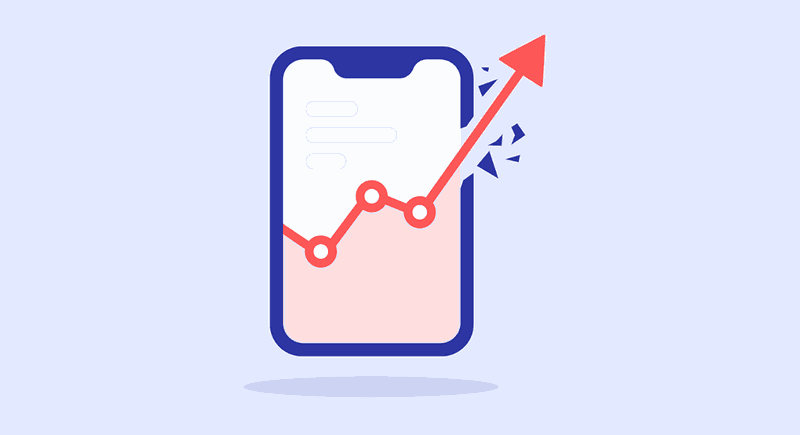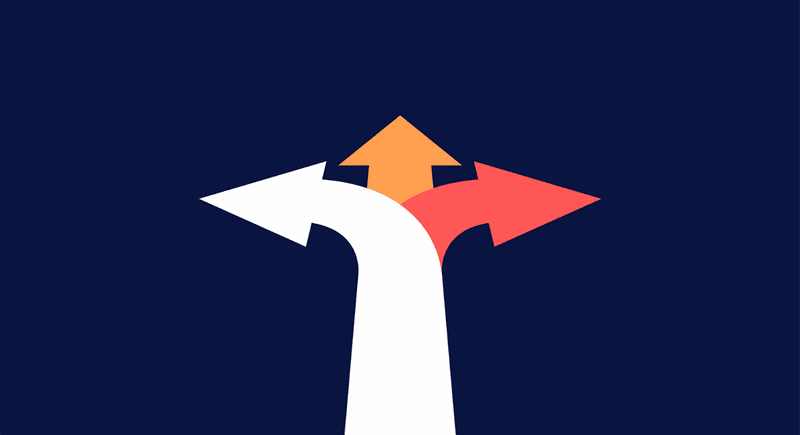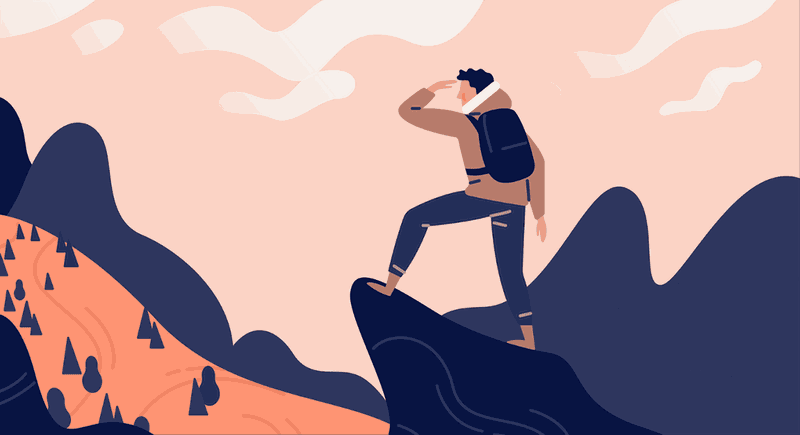At the start of 2020, much like every other year, we made plans and aspirations, which may have included a potential shift in careers toward UX/UI Design.
Little did we know that the year would be defined by a major health crisis, causing us to defer our plans.
Given the subsequent disruptions and uncertainties, is it still worthwhile to contemplate a career change in 2023?
While we cannot analyze every market, we can focus on the UX Design industry and endeavor to provide the best answer for you.
The Pandemic and Digital Transformations
If someone had told us at the end of 2019 that 2020 would bring about a major health crisis, soaring unemployment rates, and profound economic uncertainty, we likely would have dismissed that prophet with laughter.
Unfortunately, 2020 arrived and caught us off guard with all these challenges, leaving us uncertain about what the upcoming years may hold.
Consequently, due to this crisis, numerous companies recognized the necessity to change their business strategies in order to maintain competitiveness and survive this year of the pandemic.
In this context, the primary changes that companies have been implementing are closely tied to technology and digital transformations.
While innovations are typically part of the agenda and gradually implemented in most companies during normal times, these projects usually unfold over the course of several years, characterized by slow changes.
However, out of necessity, many companies are now driving transformations that would otherwise take decades, accomplishing them within months. This represents a significant leap forward for digital advancements and the establishment of a new business mindset that is likely to endure.
But what precisely has changed within these companies? What impact has the pandemic had on organizations? And do these changes bode well for the UX market?
What Effect Is COVID-19 Having on Companies?
Consulting firm McKinsey conducted a study to understand the main changes felt by companies due to COVID-19.
The first conclusion is that consumer behavior has changed a lot. Due to the need for social distancing, many people started using digital products and services.
Although this change was already happening before the pandemic, the crisis of 2020 accelerated this process by years.

As shown in the graph above, the world accelerated the use and interaction with digital products by 3 years. All regions studied showed a great leap, especially Asia.
Furthermore, companies that did not have their products or services digitized had to adapt to this new reality.
However, this adaptability was quite different across sectors. In packaged consumer goods, automotive, and assembly companies, this transformation proved to be slower. On the other hand, in the pharmaceutical, financial, and services markets, the jump in product digitization was much greater.

Companies that already had digital products in their portfolios experienced a smoother transition in this regard.
Hence, companies operating in markets with existing digital products found it easier to transition a substantial portion, if not all, of their portfolios. As a result, we can observe the correlation between emerging business requirements and the UX Design market.
Organizations now require professionals in this field to meet the significant shift in consumer behavior and the digitization of their products and services.
Reading Tip: How to Pivot Into a UX Design Career: 10 Initial Steps
But will these changes endure?
According to a survey conducted by McKinsey, respondents from various companies reported substantial transformations, including:
- an increase in remote work;
- shifts in consumer and user needs and behaviors;
- increased interactions with digital products.
Consequently, companies that experienced these changes to a significant extent also tend to believe that these transformations are permanent. Therefore, the pre-crisis state has limited prospects of resuming post-crisis.

According to the graph above, we can see that the survey respondents tend to believe that significant changes will remain in their companies, mainly:
- in consumer behavior and expectations,
- remote work,
- change of assets to cloud storage;
- demand for online purchases and services.
Again, drawing a parallel with the UX Design market, we can believe, based on the analysis of this data, that companies will continually need Product Designers in their projects post-crisis.
Another positive point is the mindset change caused by these abrupt transformations.
The study identified that a large part of the respondent companies says that investment in technology and focus on the digital market are now their priorities. Unlike years ago, in 2017, when the mindset was to reduce costs in the digital area.

Therefore, the pandemic and the crisis caused by Covid-19 have provided significant digital transformations in companies and, with that, have also changed their mindset and maturity regarding digital.
For the UX Design market, these changes are quite significant and demonstrate that companies have begun to give more value to this area and to these digital projects.
So, will UX Design thrive?

We have observed the significant changes that have impacted companies and markets as a whole due to Covid-19.
In this sense, studies have indicated that changes and investment needs in the technology and digital product area are here to stay.
But do these results really mean a positive impact on UX Design?
To gather information on what the prospects are for the future of UX/UI, the UX Design Institute conducted a survey with several heavyweight professionals in the market. The results of this survey seem promising:
1) More demand for UX skills
According to the survey, the perspective is that there will be an increase in demand for professionals with UX and digital skills.
This will happen mainly due to the expansion of companies in the digital environment, given the new needs and behavior of users.
Additionally, this demand for professionals will exist for both agencies and internal teams of companies. Logically, the increase in investment in digital products also increases the pressure on deliveries and team skills.
Reading Tip: Do I Need a Design Background to Switch to UX?
2) Talent will be more important than location
The pandemic has accelerated the adaptation process to remote work. In addition, there are now several tools that facilitate working from home, even for teamwork.
In this sense, the UX Design Institute survey concluded that companies will feel more comfortable working with remote teams.
Thus, the focus of hiring a professional will be more based on their skills than on their geographical location.
3) Greater empathy from teams
The increase in maturity of companies with regard to UX Design will make the digital product area more robust and more interactive with other business areas.
Thus, the UX Designer must be prepared to work in highly collaborative teams, interacting with IT, Marketing, Operations, etc.
4) Continuous digital evolution
Companies that were unable to adapt quickly to the crisis will increasingly invest in the digital evolution of their products and services.
The search for this evolution is more than just a competitive advantage. In the future, either you adapt to the digital or you will be obsolete.
Thus, the trend is for companies to start looking for and strengthening their UX areas, always seeking to outperform their competition.
5) Lower barriers to user research
Just like remote work, the trend is for greater use of tools to carry out remote user research.
In this way, the UX Research process will become easier and more convenient, allowing users from various other locations to be sought and able to carry out research from their homes.
These were the main results found by the UX Institute survey. But it's not just these insights that we can take from the future of UX Design.
Reading Tip: 27 UX/UI Design Tools For You to Know in 2023
What are the other perspectives for the future of UX?

The respondents to the UX Institute survey are big names in the market. Each of them was able to describe their perspectives on the future of UX Design based on their vast experience.
It is interesting to specifically highlight the perspectives of two respondents:
- Gareth Dunlop (CEO & Founder of Fathrom UX and service design agency);
- Mark Campbell (Consultant at recruitment company Morgan McKinley).
What long-term changes can we expect from the UX Design market?
According to Gareth Dunlop, we can deduce some significant changes in the UX market:
- Innovations will continue to be driven by their convenience, speed, and efficiency. Companies that adapt slowly to the digital universe will certainly become obsolete. In this sense, the advantage will always be for those who can use UX better than their competitors;
- The importance of mobility will be increased. And in this sense, mobility is not just about accessing information remotely, but being able to perform any task from anywhere. Mobility in the future will not be negotiable;
- Users will be more empowered. Years ago, consumers had no information about the products they bought. Today, there are several review sites, and social media itself provides product and service information. This trend will increase in the future. The negotiating power will no longer be in the hands of the seller but in that of the user;
- Hierarchical distances will decrease. The Covid-19 crisis provided a more humanized view of communication between CEOs and employees. In addition, remote communication tools allowed introverts to share their opinions more securely.
Dunlop's perspectives are quite aligned with the McKinsey study we observed above. Companies changed to adapt to Covid-19 and will remain so.
In addition, users have changed their behavior and are more active in the digital world. In this way, companies that do not adapt online will not have many chances of success.
What changes have been observed in UX Design hires?
Mark Campbell says that clients, at the beginning of the pandemic, actually stopped the hiring processes for open positions. This was to be expected in the crisis.
However, due to digital transformations and companies' adaptation, UX Design skills, especially research, became highly sought after.
Thus, companies sought UX professionals to meet their digital needs amid the pandemic.
In addition, Campbell expects an increase in remote UX Design hiring positions. Mark also expects an impact on the category's salary, but not with large declines.
He explains that in the first post-pandemic moment, salaries may be frozen due to companies' budget concerns. But he does not believe that the average salary will suffer major decreases.
Regarding tips for those who want to switch to UX at this time, Mark believes that it is important to work on the portfolio and establish networking.
When the market starts to return to normal, there will be a wave of hiring and people need to be prepared for it.
Reading Tip: UX Design Portfolio: 6 Essential Tips for Building Yours
So, is it still worthwhile to switch to UX Design?

Before diving into this discussion, it's essential to present the research data conducted on this subject during this period.
As we can observe, Covid-19 has compelled companies to adapt to the digital landscape by investing in apps, software, and websites to digitize their products and services.
Consequently, the market has recognized the need and enhanced its perception of UX Design's significance in the business realm.
Considering the ongoing trend of these transformations, we can expect the UX market to remain vibrant even in a post-crisis scenario, making it favorable for individuals interested in making a career change.
Hence, it is advisable to contemplate this movement and begin investing in education to acquire the necessary skills.
In this regard, we suggest taking a look at our MID program.
The MID program offers a comprehensive curriculum where you can learn everything you need to know about UX Design from scratch!








